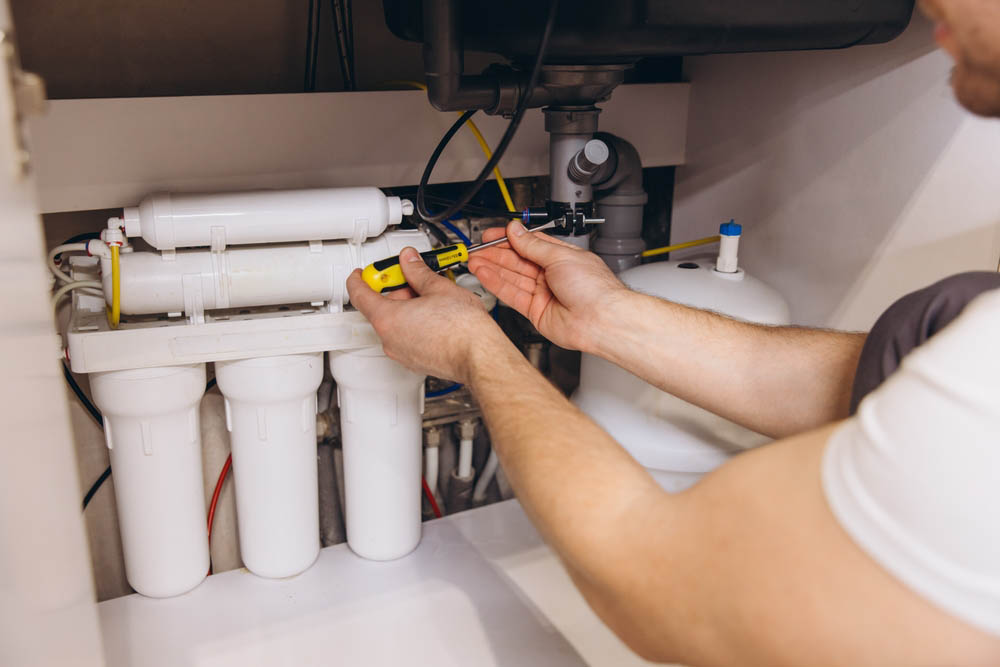
Plenty of homeowners think softened water and filtered water are one and the same. That confusion leads to poor decisions about how to treat the water they rely on every day. At Gold Star Plumbing & Drain, we’ve seen what happens when expectations don’t match reality: scale buildup in appliances, odd tastes in drinking water, and wasted money on systems that don’t meet a household’s needs. To clear things up, we’re tackling some of the most common water treatment myths and replacing them with facts. If you’re weighing your options or looking for expert water treatment services in Mesa, AZ, this guide is for you.
Myth: A Water Softener Cleans the Water
The word “softener” suggests improvement, but it doesn’t mean your water is cleaner. A water softener works by replacing minerals that’s responsible for hard water, such as calcium and magnesium ions, with sodium or potassium. That reduces scale in plumbing and appliances, but it doesn’t remove contaminants like chlorine, lead, or bacteria. That’s where many homeowners are misled: softened water feels better on the skin and doesn’t leave spots on dishes, but it hasn’t gone through any filtration process to improve taste or remove health-related impurities.
Fact: A Water Filtration System Targets Contaminants
Unlike a softener, a water filtration system is designed to remove particles and harmful substances. Depending on the filter, that might include chlorine, sediment, pesticides, heavy metals, or microbial contaminants. If your concern is drinking water safety or overall water quality, a filtration system offers a direct solution. It won’t eliminate hardness, but it will make the water safer and cleaner for consumption, cooking, and cleaning. Confusing the two systems often leads people to think they’re covered when they’re not.
Myth: Reverse Osmosis Systems and Water Softeners Do the Same Thing
This is a big one, and it’s flat-out wrong. A reverse osmosis system uses a semi-permeable membrane to remove a wide range of dissolved solids, including salts, fluoride, arsenic, and even some viruses. It’s one of the most thorough forms of filtration available. A water softener, by contrast, doesn’t filter out these contaminants. It just exchanges minerals to reduce hardness. People often assume their reverse osmosis unit makes the water “soft,” or that a softener is enough for drinking water, but each serves a separate, specific purpose.
Fact: Combining Systems Provides the Best Results
Because softeners and filters do such different jobs, they often work best together. A softener handles scale problems that shorten the lifespan of your plumbing and water heater. Meanwhile, a water purification system, like one with multi-stage filters or a reverse osmosis setup, improves water taste, odor, and safety. Many modern homes benefit from using both, especially in areas with high mineral content and municipal treatment that leaves behind chlorine or other additives.
Myth: If the Water Looks and Tastes Fine, No Treatment is Necessary
Unfortunately, contaminants that pose real health risks are often invisible and tasteless. Lead, nitrates, and some forms of bacteria don’t alter the way water appears. Relying on senses alone is risky, especially when even small amounts of these substances can affect long-term health. That’s why professional testing and customized recommendations from experienced plumbers matter. We’ve helped countless homeowners discover problems they didn’t know they had, and find affordable, long-term solutions.
At Gold Star Plumbing & Drain, we don’t believe in guesswork. Whether you need a reverse osmosis system for safe drinking water or a water softener to protect your pipes and appliances, we’ll recommend only what fits your water’s unique profile. We’ve built a reputation for honest service and high-performance results, something we’re proud to offer every customer who calls on us for water treatment services.
Think your current system might not be doing enough? Contact Gold Star Plumbing & Drain today for a professional water assessment. We’ll help you make sense of your options and make the right choice for your home.








